#brazilian architects
Text
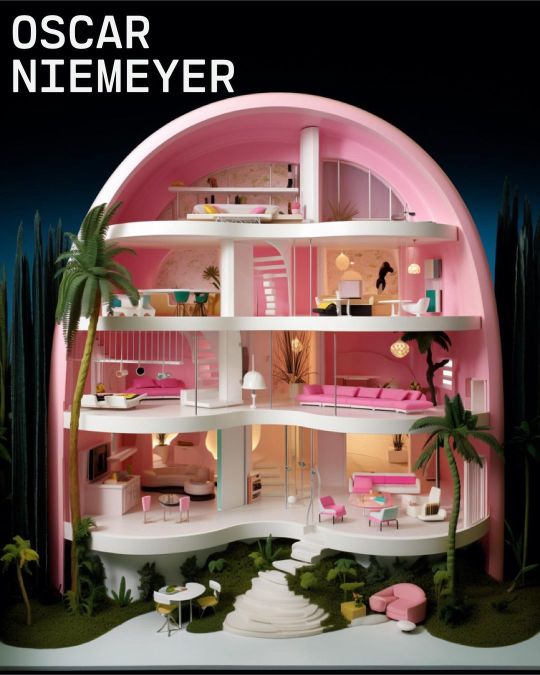


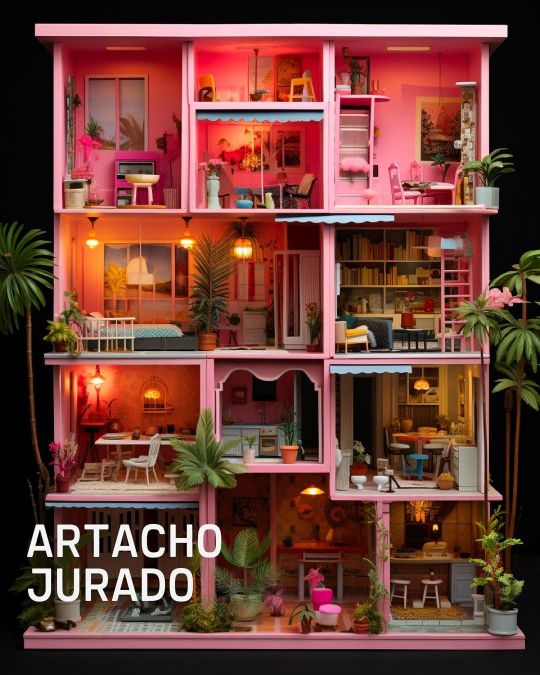
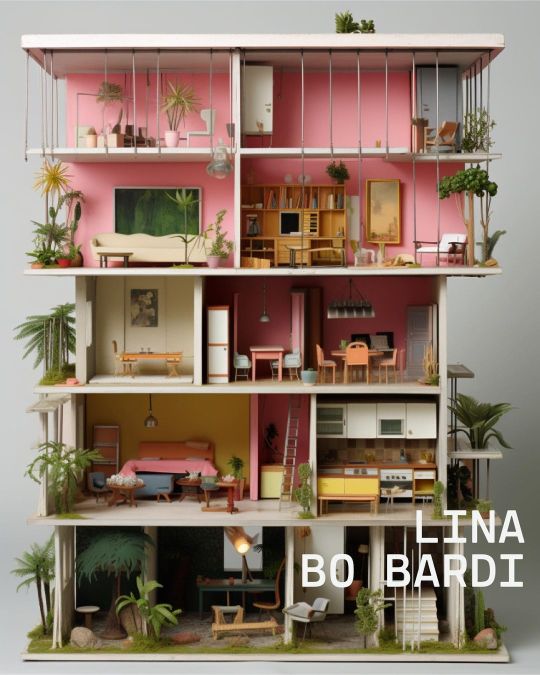

Barbie's Dreamhouse inspired by famouns brazilian architects (Felipe Pacheco, CR_IA)
#barbie#dream house#architecture#houses#architecture design#barbie house#brazilian architects#mine#paulo pacheco#AI
8K notes
·
View notes
Text

Brazilian architect & ecologist Roberto Burle Marx (1974)
413 notes
·
View notes
Photo
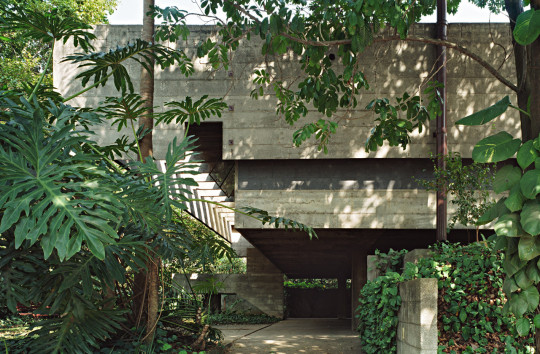
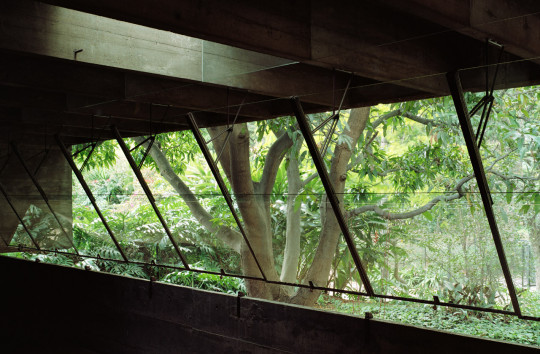
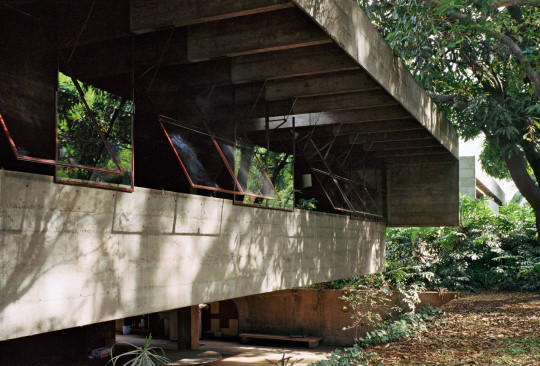
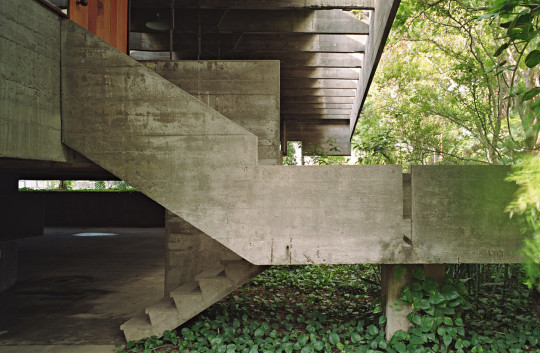
PAULO MENDES DA ROCHA
CASA BUNTANTA, 1991
Sao Paulo, Brazil
Images © Nelson Kon
#PAULO MENDES DA ROCHA#architecture#designer#architect#pritzker prize#brazilian architecture#house#residential#archdaily#dezeen#structure#concrete structure#material#landscape#ignant#somewhereiwouldliketolive#juliaknz#casa
4K notes
·
View notes
Text
ugh i thought that barbie house by brazilian architects was someome like trying to imagine how they would draw them, not an actual ai. Gross. Those architects' work deserve more than just being thrown into mindless ais to just make barbie houses in their styles.
#none of those guys deserve that fuck off#just go to Brasilia if you want to see Niemeyer's work#imagine it in pink idiot#sorry im mad#the person who creates those didnt even know which architects they wanted!#they went to chatgpt and typed in 'famous brazilian architects'#then asked for characteristics!! you dont even know what the fuck youre doing!#vai tomar no cu!!#liv.txt
2 notes
·
View notes
Note
i know architectures who are brazilians and they earn 1748x more than me and i majored in communications. plus not one of them is ashamed to be an architecture neither their families, specially if you studied architecture at that public university called USP in são paulo lol it’s not bc your family was small minded enough to think architecture isn’t good enough that everyone is like this. architectures gain PLENTY of money
are you brazilian? im gonna guess not bc if you were you would find it soooo funny talking abt usp the LITERAL hardest university to get into in brazil. do u know how many architecture courses there are in brazil? i just looked it up and more than 400. what, do u think 80% of architects from brazil major in the hardest university in brazil? lmaoooo this really did make me laugh HARD
anyways, im even separating this answer in paragraphs bc the usp thing is just so very funny. ppl from communications earn SHIT in brazil ur not making the point u think you're making its not bc an architect earns more than someone who earns 2k reais monthly they're rich. ALSO WHERE DID I SAY ANYONE OR THEIR FAMILIES IS ASHAMED OF IT???? please improve your reading comprehension. i said its not a major people try and force their kids to do, differently from per example medicine, because it's not that prestigious in that way. as a brazilian, something you're not, i know what courses brazilian families push their children to major in because of "prestige", you dont youre not from here sjdkskdkdkd plus dont talk shit abt my family they couldn't care less abt what i do they dont care about prestige WHICH IS WHAT IM TALKING ABOUT why are u butthurt that architecture is not considered prestigious in brazil and making it as it is my personal opinion on the matter. brazilians suck mostly
#ask#anon#non brazilians stop thinking you know more abt brazil than an acrual brazilian living in brazil <3#edit PLUS what also bugs me is that i NEVER said anywhere anything abt if architects earn a lot or not
7 notes
·
View notes
Text

#cybershot#brazilian#brazil#sony cybershot#cyber shot#cityscape#city lights#flash photography#streetscape#city#portoalegre#porto alegre#building#architecture#landscape architect#urban#skyscraper#buildings#urban photography#streets
0 notes
Photo
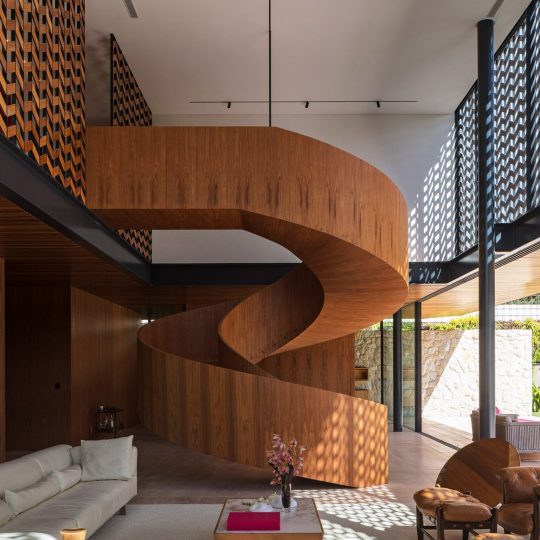
Casa Thomé Beira da Silva, Brazil
by Marcos Bertoldi Arquitetos
This helical wooden staircase anchors the large living space in Casa Thomé Beira da Silva, a Brazilian house designed by Marcos Bertoldi Arquitetos.
The winding staircase leads to the bedrooms on the first floor of the home, which features a screen of chevron-patterned wooden planks wrapped around the exterior.
Photo by Leonardo Finotti
#marcos bertoldi arquitetos#architect#architecture#interior#staircase#stairs#helical wooden staircase#brazilian house#brazil#leonardo finotti#photographer#casa thome beira da silva
0 notes
Photo

Miami Deck Uncovered
#Medium-sized tropical backyard outdoor shower deck idea without a cover decking#steps#outdoor shower#ipe#brazilian teak#handrails#landscape architect
1 note
·
View note
Text

Oscar Niemeyer's Canoe House
South of Rio de Janeiro, the Brazilian architect Oscar Niemeyer, a pioneer in exploring the plastic possibilities of concrete, built a house for his family in which to live within the exuberant nature of the area.
222 notes
·
View notes
Text
Charles Leclerc Masterlist
Written Fics
Achilles Come Down
A Crime Against Fashion
All Locked Up
Bet on It
Black Magic
Blackmail Material
Blow Out the Candles
Boop!
Borrowed Time
Brake Balance
Breaking Point
Changing Lanes
Danger Noodles
Daydream
Eurovisionaries
Fairytale
Family Feud
Fit for a Queen
Gilded Cage
Going Once, Going Twice
Head Over Heels
Hydrate or Diedrate
Inked
Lessons in Anatomy
Live Like We Want To
Lover
Made with Love
Make Them Proud
Man’s World
Mesaytara
My Brother’s Father
Never Have I Ever
Newsflash
Oscar Jack Piastri-Leclerc
Ours to Protect
Prince of Monaco
Prove Them Wrong
Puppy Love
Roll the Dice
Ruin You
Sink or Swim
Sleepyhead
So Good to Her
So Good to Me
Something Sweet
The Center Cannot Hold
Theories of Relativity
Ties That Bind
Time to Kill
Under the Influence
Use Your Words
Your Friend Steve
Social Media AUs
In My Blood (series with Senna!Reader)
architect!Reader
author!Reader
black!Reader
Brazilian!Reader
celebrity crush!Reader
CEO!Reader
college student!Reader
crazy rich!Reader
endurance driver!Reader
fashion designer!Reader
fan!Reader
Ferrari driver!Reader
Ferrari engineer!Reader
Ferrari team principal!Reader
footballer!Reader
girlfriend!Reader
Horner!Reader
Måneskin!Reader
model!Reader
nepo baby!Reader
Newey!Reader
newlywed!Reader Part I
newlywed!Reader Part II
New Year’s Edition
pop star!Reader
pop star!Reader II
PowerPointless Part II
Princess of Monaco!Reader
pr manager!Reader
protective!Reader
revenge era!Reader
royal!Reader
Sainz!Reader
scandalous!Reader
shameless!Reader
single mother!Reader
socialite!Reader
Vettel!Reader
widow!Reader
wife!Reader
Wolff!Reader
Wolff!Reader II
Wolff!Reader x Max Verstappen
#pucksandpower masterlist#charles leclerc imagine#charles leclerc x reader#charles leclerc x you#f1 instagram au#f1 social media au
2K notes
·
View notes
Text

Cathedral of Brasília, Brasília, Brazil: The Cathedral of Brasília is the Roman Catholic cathedral serving Brasília, Brazil, and serves as the seat of the Archdiocese of Brasília. It was designed by Brazilian architect Oscar Niemeyer and engineered by Brazilian structural engineer Joaquim Cardozo, and was completed and dedicated on May 31, 1970. Wikipedia
91 notes
·
View notes
Text
MY TURN 🤗!!!!
OUR DESIGNER 2/2
MY S/I IN WILD KRATTS UNIVERSE!

I like green, blue, black, orange and especially purple (but the spots were already filled 😔)
So I decided to put one of the other colors I like on my s/I, turquoise! And there it is!
Bio of my S/I:
•Name: Samara Barros
•Nickname: Sammy, S2, Redhead, lime orange.
•Age: 24 years old
• Sex: Female
•Date of birth: 01/09
•Nationality: Brazil/RJ
•Sign: Virgo
•Signature color: Indigo, Turquoise or Violet
•Eye color: Medium brown
•Skin color: Fair
•Hair color: Copper
•Relatives:
Sara (older sister)
•Friends:
Chris Kratt 💚
Martin Kratt
Jimmy Z
Aviva Corcovado (BFF)
Noah Tyer
Koki
Paisley Paviment
•Appearance:
Samara is a young woman with short pixie style hair; She is thin but average, even though she is a little taller than her sister.
•Personality:
Samara is lively, funny, has a huge taste for adventure and a thirst for new challenging experiences; She is competitive, intelligent but she is also calm, until her calm ends, because she knows how to give a beating to the person who mainly messes with her sister, but also, 50% of the cases, Sammy is emotionally cold.
•Occupation: Reptile zoologist, interior design, architect and landscaper.
•Likes: Chris Kratt 🤭, animals, reptiles, her tortoise, draw, art, math, science, calculate, help Aviva with technologies, keep everything tidy, plants, flowers, purple and chocolate with lemon.
•Dislikes: Soft foods, dirt, Zach Varmitech, the villains, mistreating animals, people and plants
*Sammy is autism (mild level)
*Sammy, like your sister, she speaks Brazilian Portuguese, her native language, in English, Spanish and German fluently
91 notes
·
View notes
Text
Small town au stuff
Philza is kindhearted yet oddly knowledgeable and mysterious resident who seems wiser beyond his years and may or may not be a witch. Especially questionable is that giant ass hat of his. Maybe a witch. He is retired and has a suspiciously large income, and somehow knows how to fly a plane?!! Maybe a retired vet or spy? Its undetermined. Or maybe just your basic crop duster. He does talk about potatoes a lot for some reason.
Foolish, your local cop and sheriff. The heart throb of the police department and kind of the definition of abuse of power (but only when its funny). He'll probably let you off for speeding or doing donuts in corn fields. His previous job was the town's major architect, which he still builds sometimes, but wanted to harass random people as a police officer for a new temporary occupation.
Quackity, the emotional weirdo teacher who's got attachment issues out the wazoo. He is sweet, but spirals sometimes. Its been rumored that he's been beaten up by Phil's kid for reasons unexplained.
Wilbur, of course, the aspiring musician. Gets confused a lot for other famous people, but plays at events when he's home. Loves his kid, but has been gone for most of the year and feels insecure for not calling her as much.
Jaiden, the town's lawyer who is rolling in it. She wins a lot of her cases and maybe does some of the illegal legwork to prove her client's innocence or the accused guilty. She does a lot of investigating with Foolish and has a key to the polices archive room. She has gotten noise complaints about her two loud birds.
Forever, a new resident along with the other Brazilians who all live in his giant pink Barbie house until Cellbit moves out to get married. Forever quickly gains popularity among the town's residence and becomes mayor of Quesadilla Town. He has been chasing after Philza this whole time, but there are whispers that he has a thing for the local pastor.
Badboyhalo, the priest, which Forever has remarked that's probably the strangest one out of the town's peoples names but it fits. Bad is a strangely wealthy and knowledge priest. His face is always masked by shadows and a hood. He always appears out of nowhere and seems to derive amusement from spooking the other residents. Forever thinks that's cute.
Roier, from Jaiden's platonic roommate to Cellbit's husband, man has never had a job and is just a trophy roommate/husband. Always physically fit, the life of the party and if the town had a best looking competition, he'd be at least top 5. Spends his day working out and is often seen on long runs in the woods. He may or may not be the one always finding weird things on his runs. Like a random artifact or an unfamiliar body.
Cellbit, town's journalist. Always looking for clues on the strange going ons and always has one of those huge boards with photos, tacks, and red thread. Man hardly sleeps and is running on six cups of coffee a day. Get him some water.
Fit, he owns of course Fit's Fitness. The sexiest personal trainer in the county and has a prosperous business. Him and Phil are somehow friends, and he weirdly seems to know things he shouldn't. Has been seen fraternizing with the weird agents that come through town and cover stuff up.
Baghera is another school teacher in Quesadilla town. She is the funnier one but also there seems to be an immense sadness to her. She avoids any special agent from the Cucurucho Factory.
Etoiles is a mysterious vigilant who fights suspicious figures and deadly monsters in the night. He's kind of the ex machina of the town and can be found lurking in the back alleys. He may or may not be a clerk at your local giftshop.
Cucurucho is an interesting and strange character, a business man in a white suit wearing a bear mask at all times. He runs the Cucurucho Institution along with its factory and seems to hold some bizarre legal authority over the town. He also has connections in the hospital and school and all around is just a sketchy person. He has many of his underlings do his bidding around town and they have been seen dumping chemicals in the river and interrogating certain residents.
Pac is your new local gym teacher and has stolen the town's physical trainer's heart. They've been having a cute shy will they won't they. It's extremely obvious to the whole town. He is best friends with the mad scientist science teacher Mike. And they get up to shenanigans. And for a gym teacher, the guy sure is smart and knows a lot of ways to build things. He's like the ultimate package!
Missa is Phil's platonic husband who is always away on business trips. He shows up into town for about a week then has to head out again to do business related business. He is jealous of Phil's love interests but also won't deny how hot they are and that also makes him insecure.
Charlie is the troubled baker/conessieur in town. He always has a creepy smile about him when you ask what's in his food, but he's just screwing with you and its actually delicious. He has been seen dragging huge lumpy bags with red liquid pouring out of it and swears it's just strawberry jam. Turns out if you licked the floor, it is. His favorite dessert to make is green jello.
Tubbo is the weird little mechanic that is always putting bizarre attachments to your vehicle and making odd do dads in his spare time. No one knows where he got his mechanic license, but no one mentions that he's probably doing this illegally cause of his sweet deals.
Mouse is a famous vtuber who may be working with the occult on the side for the funsies. Is she running a cult? Perhaps. But it would be funny if she did. Anyways she has a lovely home and gives lots of her money as donations to less sketchy hospitals.
#Qsmp#Quackity smp#Small Town au#Philza#Forever#Foreverplayerg#Qsmp forever#Qsmpforever#Q!forever#Wilbur soot#missasinfonia#Fitmc#Pactw#Mikelink#Quackity#badboyhalo#Baghera#slimecicle#Charlie#Jaiden#jaiden animations#Roier#Cellbit#Tubbo#Ironmouse#Fitpac#Sugarduo#Philever#4halo#Eclipseduo
92 notes
·
View notes
Photo



FCP Niemeyer
Espace Niemeyer, the old headquarters of the French Communist Party, designed by Brazilian architect Oscar Niemeyer in the 1960s and completed in 1980s.
150 notes
·
View notes
Text


It is basically impossible not to admire Brazilian architecture: the curves of Oscar Niemeyer, the concrete surfaces and wide spaces of Vilanova Artigas or Mendes da Rocha’s houses surrounded by lush vegetation have very much shaped the reception and the image of Brazilian architecture in the west. Freeing itself from the shackles of colonialism modern architecture as designed by Niemeyer and Lucio Costa but also from earlier figures like Gregori Warchavchik was an expression of newly gained sovereignty that ultimately culminated in the construction of Brasília. But as the latter implies Brazilian modernism from the very beginning was political and continued to be well into the late 20th century. The latter is my eye-opening insight gained from reading the present volume that only now found its way into my library: „Infinite Span - 90 Years of Brazilian Architecture“, edited by Fernando Serapião, & Guilherme Wisink and published in collaboration with Casa da Arquitectura in Porto by Lars Müller Publishers in 2019. Departing from Lucio Costa’s Study Mission to Diamantina the volume brings together countless projects spanning 90 years of Brazilian architecture, well-known projects by the big names as well as lesser-known ones by e.g. Gian Carlo Gasperini, Sergio Ferro or Marcello Fragelli. These make up the major part of the book but are complemented by a number of essays addressing a variety of topics including the decisive importance of Brasília, the examples of Reidy and Vilanova Artigas also as political architects and the global reception of Oscar Niemeyer. „Infinite Span“ is a great read and re-sparked my love and deep interest in Brazilian architecture also aside its aesthetic appeal. Highly recommended!
40 notes
·
View notes
Text
At the inauguration of the First Brazilian Congress of Eugenics in July of 1929, the physician and anthropologist Edgar Roquette-Pinto [...] exalted “eugenia” as the new science that, together with medicine and hygiene, would guarantee the efficiency and perfection of the race. [...] [This] agenda [...] brought architecture to the very core of the eugenics [...] movement [...]. [M]edical scientific discourses, first articulated in France, crossed the ocean [...]. [G]lobal movements, hygienics and eugenics, [...] became the dual vehicles for bringing architecture into active dialogue [...].
In Brazil, the nation was seen as a sick organism [...]. In the center of Rio de Janeiro, this mission brought together a diverse cast of characters: from the physicians and architects of the Parisian Musée Social, the early French think-tank [...], to the physicians and architects of Rio de Janeiro who formulated [...] Brazilian modernism, to Le Corbusier, who began consolidating a eugenicist ideology precisely during the months he spent in Brazil in the mid-1930s.
---
In the early 1920s, [...] a dramatic event occurred in Rio. [...] [A] sanitary and urban reform [...] reached its climax with the demolition of an entire populated mountain, the Morro do Castelo, in the center of the Brazilian capital. This mountain was no ordinary mountain; it was the original site where the colonial city [...] had been established in 1567. [...] As far back as 1798, a medical report had argued for the mountain’s demolition [...]. [T]he mountain came to be seen as the very negation of modernity itself; a reservoir of vice and disease with a motley “marginal” population, including poor Blacks and formerly enslaved people who, according to the elites, invaded the center of the city [...].
The extensive territory that resulted from this demolition was immediately occupied by the 1922 International Exhibition. [...] Promoting itself as a tabula rasa, the exhibition represented a literal “triumph” over the territory -- a territory now cleansed of its history and unwanted inhabitants. It’s more than 500-page catalog is striking in its complete elimination of all traces of the African and indigenous components of Brazilian culture. [...] Its images demonstrate a new alliance between beauty, health, tropicality, and modernization that Brazilian elites adopted [...].
Shortly after the exhibition, in 1922, and lasting until 1938, neo-colonial architecture was declared by the government to be the national style, mandatory for every building that would represent Brazil abroad. [...] It was not a coincidence that all this -- the demolition of the mountain, the elimination of Rio de Janeiro’s original urban nucleus, the displacement of its poor residents, and the construction of the exhibition pavilions -- was executed almost simultaneously with new policies and mandates such as the “white only” decree of 1921, which prohibited the immigration of Blacks to Brazil. [...] No one illustrates this connection between race and architecture better than Lucio Costa [the architect of Brasilia, the new modernist national capital city] —who, in 1928, made this racist link in a newspaper article: [...] All architecture is a question of race. [...] Everything is a function of race. If the breed is good, and the government is good, the architecture will be good. Talk, discuss, gesticulate: our basic problem is selective immigration; the rest is secondary [...].
---
When Le Corbusier traveled for the second time to Brazil in 1936, his discourses were centered on nature, death, and the racial and sexual “other.” [...] In 1936, while preparing his series of talks in Rio de Janeiro, Le Corbusier made a sketch on a piece of cardboard that distilled and concretized [...] rationales of modernity: change the environment, change the man. Written at the top is the word “Castello,” followed by the name “Lucio Costa,” the phrases “pedro aller police” and “Castello coûts clichés,” the name of architect “Carlos Porto,” and the phrase “Acheter livre Carrel.” The latter was a reminder for him to buy the new bestseller by the French Nobel prize-winning physician Alexis Carrel, Man The Unknown, an unmistakable call for the implementation of eugenics and manifesto for white supremacy. What made Le Corbusier think of Carrel while thinking of Rio de Janeiro?
It is not a mere coincidence that Castelo, one of the most significant eugenic laboratories in Latin America, is the first word that appears on the cardboard.
But Castelo was not only the name of the pulverized mountain from which thousands of “undesirable” inhabitants had been displaced, or the stage for the 1922 international exhibition with its neocolonial pavilions and its image of white Brazil, or the epicenter of the master urban plan that Agache had designed for Rio. Castello was also where Lucio Costa was designing the new building for the Ministry of Health and Education, the institution charged with developing and enforcing Brazil’s eugenic policies under Getulio Vargas’ new authoritarian regime, for which Le Corbusier had been invited to be a design consultant. This sketch links the dramatic transformation of the urban territory of Rio de Janeiro to Lucio Costa’s project and to Carrel’s vision for remaking society. [...]
In his Oeuvre complète 1934-1938, Le Corbusier included a sketch of the Brazilian Ministry of Health and Education building. This new ministry [...] later became the symbol of Brazilian modernism [...]. Gustavo Capanema, the first Minister of Health and Education, had commissioned both the building, which he called the Ministry of Man and was destined to “prepare, compose, and perfect the Brazilian man,” [...]. Capanema pondered, “How will the body of the Brazilian man be, of the future Brazilian man, not the vulgar man or the inferior man but the best exemplar of the race? How will his head be? His color? The shape of his face? His physiognomy?” [...] When Le Corbusier came back [from Brazil] to France and began collaborating with Alexis Carrell under the [Nazi] Vichy regime, his vision of a clinically inspired habitat where all human needs can be met reached a new level of specificity. [...] He was convinced that the human body, the anatomo-politics of its productivity, and the built environment should be managed by the State. In a 1941 broadcast he affirmed that "[...] The degeneration of the house, the degeneration of the family, are one."
---
All text above by: Fabiola López-Durán. "Fantasies of Whiteness". e-flux Architecture. Sick Architecture series. April 2022. [Bold emphasis and some paragraph breaks/contractions added by me. Presented here for criticism, teaching, commentary purposes.]
93 notes
·
View notes